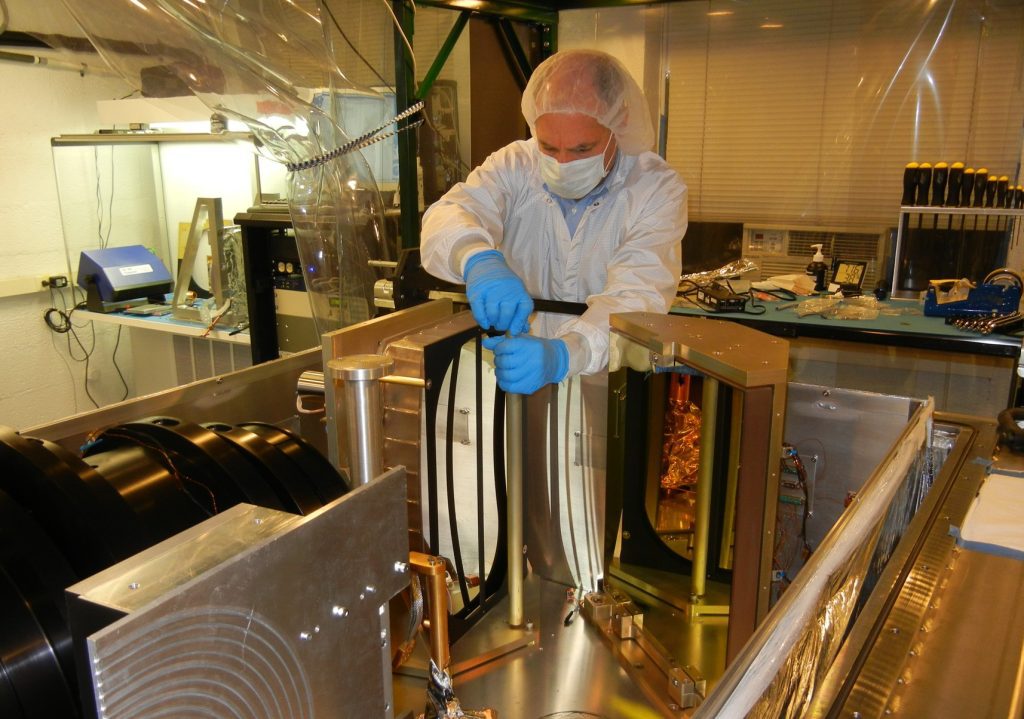
The Instrument Development Group contributed to the development of both APOGEE North (at Apache Point Observatory, NM) and APOGEE South (Las Campanas Observatory, Chile). APOGEE is a high-resolution near-infrared spectrograph used to study stars in the Milky Way galaxy. The spectrograph operates in H band, from 1.52 to 1.69 microns, with a resolution of order 20,000. The spectrograph uses 300 low-OH (“dry”) fused silica fibers with a FOV of 2″ to transfer light from the focal plane of the telescope to the spectrograh located in an adjacent instrument room. To minimize thermal background and improve instrument stability, the optical system operates at liquid nitrogen temperature and is isolated from the ambient by the external vacuum vessel. The IDG played a key role in the optomechanical design of the spectrograph. The IDG was responsible for the the design and testing of the collimating mirror tip/tilt/piston mechanism, the shutter mechanism, fold mirror mounts, and the mount for the volume phase holographic (VPH) grating, all of which function at cryogenic temperature.
